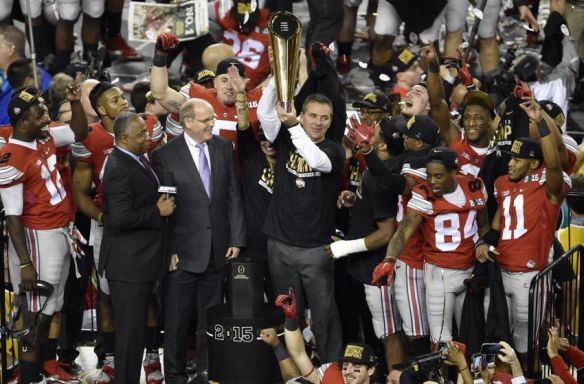This week sports channels, social media, and even news sources like CNN, The Huffington Post, and TIME Magazine (!?!) are weighing in on what is being called “DeflateGate;” the latest term to be presumed a scandal because “gate” is used after the root word. For those unfamiliar, the premise is this: The NFL found that the New England Patriots used 11 footballs that were underinflated in their AFC championship game against the Indianapolis Colts.
A game that resulted in a 45-7 victory for the Patriots sending them to the Super Bowl and the Colts home to a state split into two different time zones. The brouhaha or hullabaloo producing the outlandish outrage is that the Patriots, who are no stranger to controversy (Google: Spygate), purposely cheated to gain an advantage. While the head coach may not have known, Tom Brady, the quarterback, probably, likely, should have known the balls were not up to game regulation.
Ladies and gentlemen, as I write this, there are 8,040,000 results that populated when Googling the term “DeflateGate.” There have been press conferences, current and former players weighing in, and endless chatter … all about the amount of air in a ball. First-world problems, much?
From a communications perspective, much is being made about Tom Brady’s press conference, where he stated:
- “I didn’t alter the ball in any way … I have a process I go through before every game.”
- “I would never do anything outside of the rules of play.”
- “This is a serious thing.”
All while trying to keep a straight face while wearing in a stocking cap with a fuzzy ball on top, indoors.
Sometimes he couldn’t’ help himself such as when he was asked if he was a cheater. After finally cracking, he pauses, licks his lips, and then answers “I don’t think so.” Body language experts would tell you this reaction means two things: He’s lying! Or he’s just nervous. (Never mind the ironic “Flexball” sponsorship in the background during an issue in which the pressure of the football seems to be exactly that: flexible).
Maybe Brady was laughing not because he was lying (maybe he was) or nervous (despite his ability to calmly stare down 300-lb men trying to do him bodily harm every Sunday). Maybe he realized how ridiculous Deflategate had become and was laughing at the lunacy of the whole spectacle; the same way most of our six-year-old selves chuckle every time we hear something about “deflated balls” while this is being discussed.
But the bottom line is this: The Colts lost by a 35-point pounding. Not by a controversial “tuck rule” fumble (also involving the Patriots). Not by a narrowly missed field goal. Not by that one touchdown pass that could have only been thrown and caught because there was a smidge less air in the ball.
The Patriots blew the Colts right out of the barn. Even if you take the 18 points off the board from the touchdowns that Brady threw, the Patriots still had a commanding 17-point victory.
So from a communications standpoint, what can be learned from Deflategate? Simple: Any and everything can and will be used to fill up a 24-7 news cycle leading up to “the big game.” Just be smart enough to block some of it out and keep things in perspective.


